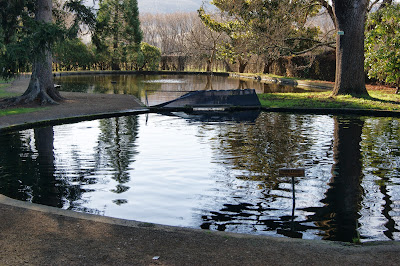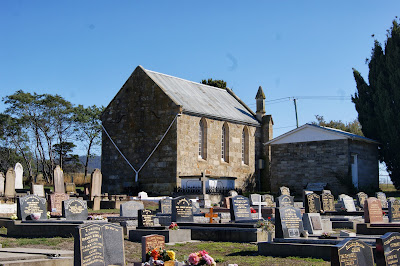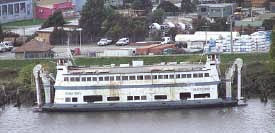To make their new surroundings more like ‘home’ they introduced European plants and animals. Salmon was one of the many species chosen for introduction, largely because of the popularity of fishing but also because of the anticipated economic benefits.
Due to the popularity of salmon fishing back ‘home’, and also in the hope of economic benefits, the Salmon Ponds hatchery was built to receive live salmon eggs (ova) which were to be transported from England. Initial attempts during the 1840s and 1850s failed. The problems faced in transporting the live ova were massive: long sea voyages, some of which was across hot environments, a distance of almost 20,000 kilometres, and all this time the ova had to be kept cool and moist. Several attempts failed, and sadly on these voyages all ova were lost.
A small number of trout eggs, however, had been included with the first shipment of salmon eggs. They were hatched and raised along with the salmon. The salmon are a migratory fish so when released, it was expected that the salmon would return to the Derwent River. Several releases were tried but for some unknown reason the salmon never returned. Unlike salmon, trout are generally non-migratory and they quickly became established throughout the State’s lakes and streams. The foundation of today’s valuable recreational fisheries had been laid.
The Salmon Ponds at Plenty, built in 1861, is the oldest trout hatchery in the Southern Hemisphere. The Salmon Ponds are set within the original 19th century English style gardens, where beautiful English trees up to 150 years old still flourish. From its earliest beginnings, the property was designed with visitors in mind.
Landscaped grounds were filled with exotic trees to create a network of display ponds were established within the gardens at the hatchery and the Salmon Ponds were open to the public. With its hatchery, rills, ponds and running water, grassy swathes and unusual trees astride water channels, the Salmon Ponds was an instant success with visitors. Some of the original trees from China, Japan, and Mediterranean countries, are now 140+ years old.
It is a rare example of a 19th century English style public open space and was made possible by the generosity of Robert Cartwright Read of Redlands Estate next door who was willing to lease a portion of his land. The Salmon Ponds site was also one of the earliest uses of grassed areas in garden design and the original Hawthorn hedges still form the boundary of the ponds and are the backdrop to the river walk.
Located at the northern end of the river walk is the Hawthorn archway. This was the original entrance to the Salmon Ponds as visitors embarked from the train or other transport at Plenty township and walked along the riverbank past Redlands Estate to enter.
The first ‘hatchery’ was a tent with wooden sides, but in 1870 the tent was replaced with a small wooden building, and over time this was enlarged to become the structure you can see today. Trout raised here, using eggs harvested from wild fish, are used to complement Tasmania’s world renowned fishery.
The flow of water through the salmon Ponds is a key feature of the garden. In the 1860’s, Redlands Estate installed a convict built, gravity fed system taking water from the nearby Plenty River to irrigate their hops fields. This water source was shared by the Salmon Ponds and still supplies the water required by the hatchery.
Located on the site is the ‘Sanctuary’, an old fishing shack built in about 1947 by a Mr William Burrows, a Commissioner for the Salmon and Freshwater Fisheries Commission as it was then known. He built the shack using the wood from packing crates used to bring a car chassis over from mainland Australia. This shack is a classic example of many of the shacks built near lakes and rivers throughout Tasmania over the past century.
Also on site is the Museum of Trout Fishing which is located in a cottage built for the first superintendent of the Salmon Ponds in 1865, and was successively occupied by the Keepers of the Ponds. The Stannard and Jones families continued an unbroken family succession spanning 109 years as Keepers of the Ponds.
The kids can feed the trout in the ponds as they wander around the magnificent gardens (Fish food dispensers and tubs are available at a number of spots around the gardens for only $2.00 per tub of feed) whilst mum and dad can have a relaxing cup of tea and pancakes at Pancakes on The Pond, the onsite restaurant/café. A peaceful and fascinating place to spend some time with the family or just by yourself.
Salmon Ponds Website: http://www.salmonponds.com.au/
Text & Information sourced via Salmon Ponds website & via information signs & pamphlets at the Salmon Ponds





















































